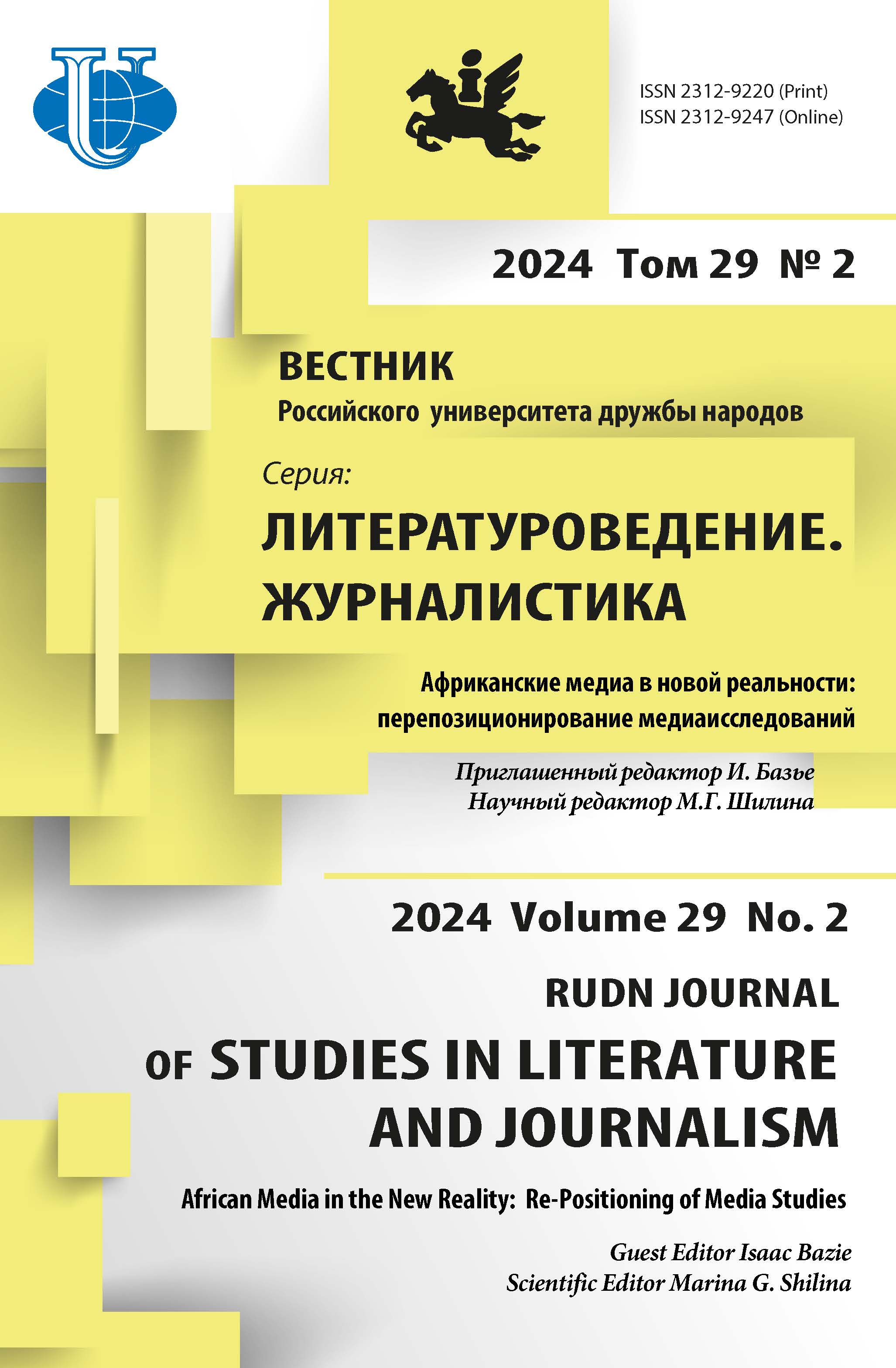Phebi claro...: the multilayered ambivalence of the “bilingual alba”
- Authors: Semyonov V.B.1
-
Affiliations:
- Lomonosov Moscow State University
- Issue: Vol 28, No 1 (2023)
- Pages: 30-40
- Section: LITERARY CRITICISM
- URL: https://journals.rudn.ru/literary-criticism/article/view/34353
- DOI: https://doi.org/10.22363/2312-9220-2023-28-1-30-40
- EDN: https://elibrary.ru/IPRDIG
Cite item
Full Text
Abstract
The author presents the history of the most significant interpretive transcriptions made by European linguists and medievalists for the monument of early Romanesque lyrics of the 10th century, the anonymous song Phebi claro.. , known under the a posteriori title imposed on it Alba Bilingue . Paying attention to the transcriptions of the text in general, and especially of the refrain, presumably written in Occitan, makes it possible to see the materialized views of their authors on the specifics of the language of the monument, in particular the assignment of word forms to a certain language and the sphere of a certain stylistic coloring (literary speech vs. vernacular speech). This, in turn, makes it possible to understand how each of the researchers saw the whole reconstructed meaning of the song. Attention to the existence of two options for interpreting the text - as a continuation of the Ambrosian allegorical tradition of religious poetry and as a pretext for the secular alba genre in the love lyrics of the troubadours - is drawn, and these options are evaluated. Separately, the verse forms of the monument, to which not enough attention was paid by polemical researchers, are described, and the unity of euphony techniques is stated, which is an important conclusion in the light of the fact that the vast majority of studies usually present Latin couplets and the Romanesque refrain in opposition, reaching the assumption of a late insertion of the refrain. The author pays attention to the lack of unity in the lyrical plot of the monument in view of the fact that the interpreters passed this plot as an obviously important layer of the text by. Also the author points out that in one way or another all interpretations were aimed at simplifying, narrowing the meaning of the monument, which seemed achievable as a result of conjectures, and suggests that contradictions at all levels of the text could be initially set by anonymous author of this song, and linguistic, rhythmic, plot, etc. ambivalence is its essential state, which does not require simplifying, one-sided interpretations.
About the authors
Vadim B. Semyonov
Lomonosov Moscow State University
Author for correspondence.
Email: vadsemionov@mail.ru
ORCID iD: 0000-0003-2532-5381
Candidate of Philology, Associate Professor at the Theory of Literature Department
1 Leninskiye Gory, bldg 51, Moscow, 119991, Russian FederationReferences
- Canettieri, P. (2012). L’alba di Fleury da un’altra specola. Romance Philology, 66(2), 211-308.
- Fuente Cornejo, T. (1999). La canción de alba en la lírica románica medieval: Contribución a un estudio tipológico. Oviedo: Universidad de Oviedo.
- Hilty, G. (1998). L’énigme de l’Aube de Fleury est-elle déchiffrée? Revue de linguistique romane, 62, 320-330.
- Laistner, L. (1881). Zur altesten Alba. Germania, 26, 415-420.
- Lazzerini, L. (1979). Per una nuova interpretazione dell'Alba bilingue (cod. Vat. Reg. 1462). Studi medievali. Serie III, 20, 139-184.
- Lemekhov, S. (2021). The origins of European lyrics. Alba. Yekaterinburg: Izdatelskiye Resheniya Publ. (In Russ.)
- MS Città del Vaticano. Biblioteca Apostolica Vaticana. Reg. lat. 1462. Fol. 50v.
- Roncaglia, A. (1951). Il Muratori e la “tesi araba” sulle origini della ritmica romanza. Miscellanea di Studi Muratoriani: Atti e memorie dell'Convegno di studi storici in onore di L.A. Muratori, tenuto in Modena 14-16 aprile 1950 (pp. 300-314). Modena.
- Schmidt, J. (1881). Die älteste Alba. Zeitschrift für deutsche Philologie, 12, 333-341.
- Simonelli, M.P. (1984). A proposito dell’ “Alba Bilingue”. Annali Istituto Universitario Orientale. Sezione Romanza (pp. 297-330). Napoli.
- Waddell, H. (1929). Mediaeval Latin lyrics. New York: Henry Holt & Co.
- Zwartjes, O. (1997). Love songs from Al-Andalus: History, structure, and meaning of the Kharja. Leiden: Brill Academic.
















